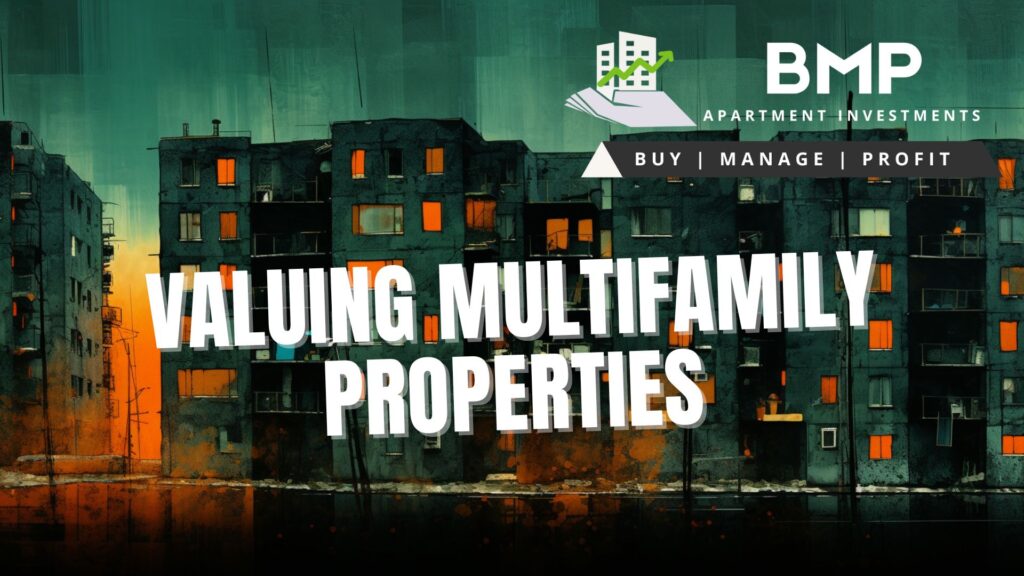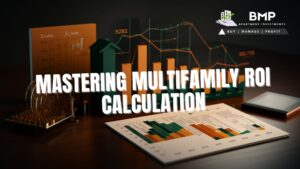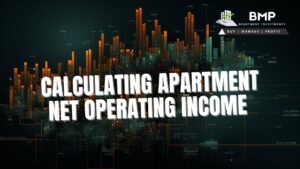A question that often perplexes our investors and associates is, “How can I accurately determine the appropriate value for an apartment building?” It is a critical decision with far-reaching implications for multifamily investors. Even if a property appears flawless in every aspect, paying an excessive amount could impede the attainment of the desired returns.
Fortunately, the process of valuation is relatively straightforward, although the underlying intuition may be slightly more intricate. I guide students through the income capitalization approach, which revolves around two key factors: net operating income (NOI) and the capitalization rate (cap rate).
Understanding Net Operating Income (NOI)
While residential properties are assessed based on comparable sales, commercial properties, including multifamily buildings, are evaluated based on their ability to generate NOI. NOI is determined by deducting the property’s operating expenses from its gross income. To grasp the significance of this equation, it is beneficial to delve into each component individually.
Gross income encompasses the cumulative revenue streams generated by a commercial multifamily property. While the majority of the income is derived from rent payments, there may be supplementary sources such as pet rent, application fees, parking fees, storage unit rent, or income from laundry/vending services.
Operating expenses represent the costs associated with the day-to-day operations of a property. Although these expenses vary depending on the property, the general categories remain consistent. They encompass taxes, insurance, utilities, maintenance, property management, legal fees, and administrative costs.
Projections of income and expenses are inputted into a financial pro forma, which estimates the net operating income for a specific holding period. This figure serves as the primary input in the valuation equation.
Understanding the Capitalization Rate (Cap Rate)
The cap rate, by definition, signifies the rate of return an investor can anticipate when purchasing a property with cash. The formula used to calculate the cap rate is NOI divided by the property value. However, the challenge arises when attempting to determine the purchase price because the value is often unknown. Hence, estimating the cap rate becomes a common practice.
To arrive at an accurate estimate, it is essential to review recent sales data of comparable properties and calculate their cap rates based on the NOI at the time of sale and the corresponding sales prices. Subsequently, these cap rates are compared to the target property, taking into account prevailing market conditions, to ascertain an appropriate value. Cap rates are influenced by multiple factors, all of which revolve around the perceived risk associated with acquiring the property. A higher risk profile may lead to an adjustment of the cap rate, while a property deemed less risky than the market may result in a lower cap rate.
Once the entry cap rate is determined, the property’s value can be derived by dividing the NOI by the chosen cap rate.
Illustrating Property Valuation with an Example
Let us examine an example to better illustrate this process.
Suppose an investor contemplates the acquisition of a 50-unit multifamily property. After reviewing historical financial statements, creating a personalized pro forma, and documenting cap rates from comparable sales, they deduce that the target property is projected to generate a stabilized net operating income of $250,000, with a selected cap rate of 7%. Based on these inputs, the estimated value of the property amounts to $3.57 million ($250,000 / 7%).
At this price point, the investor can expect to earn a 7% annual return on a cash purchase of the property. In practice, financing will likely be involved, enhancing the potential returns even further.
Benefits and Risks Associated with this Valuation Technique
The primary advantage of utilizing the income capitalization approach lies in its ease and accessibility of the inputs required for the calculation.
However, it is essential to recognize that this approach relies
heavily on estimates and assumptions regarding average rental rates, occupancy levels, and income/expense growth. Herein lies one of the risks associated with commercial real estate investment. The valuation estimates are not guaranteed to materialize, and the actual performance of the property may deviate significantly, for better or worse. It is an imperfect science, and the consequences of erroneous valuations can prove costly.
Hence, I recommend two key considerations when determining a purchase price. Firstly, it is crucial to acknowledge that the valuation of a multifamily asset is an estimate that can vary based on the biases of the individual conducting the analysis. Some investors may adopt an optimistic stance, while others may perceive risks that are not readily apparent. There is no definitive “correct” answer, but one can strive for an approach supported by data and analysis.
Secondly, I consistently advocate for exploring a range of valuations (purchase prices) and the corresponding returns they yield. This range should encompass a base case scenario, representing the most likely outcome, as well as best-case and worst-case scenarios. This comprehensive evaluation provides potential investors with a deeper understanding of how the acquisition price can impact the ultimate returns achieved.
In conclusion, valuing a multifamily property requires a thoughtful analysis of net operating income and the capitalization rate. While the process may involve certain complexities and inherent risks, the income capitalization approach serves as a valuable tool for investors seeking to make informed decisions in the dynamic world of commercial real estate.











